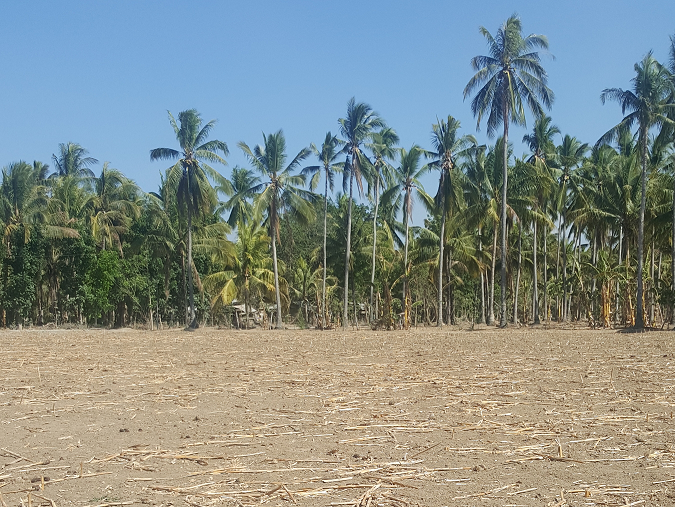
Sarangani farmers go hungry in drought
El Niño brings drought to 40 per cent of the Philippines
Now we seldom eat rice or bread, [and when we do] it’s mostly with just vegetables,” says farmer Jennie Korbo, while surveying the cracked, parched soil of what used to be a corn field in Sarangani province, Mindanao.
While the Philippines is in the midst of election fever, farmers in the south are suffering from El Niño-induced heat that is laying waste to normally productive land.
Jennie has lost her two last corn crops and is now in serious debt because of the drought. The ribs of her two cows are clearly visible as they amble from tree to tree seeking shelter from the unrelenting sun. “I just give them water so that they feel full. They only eat the dried corn stubs from the field,” she says.
The provincial capital of Alabel in Sarangani is full of farmers like Jennie who depend on corn for their livelihood. The municipality declared a state of calamity in 2015 when the region began to feel the full impact of El Niño.
Now with an estimated 40 per cent of the country suffering drought, 11 provinces, 10 cities and 26 municipalities and barangays across the country - but mostly in Mindanao – have declared states of calamity. Some 182,000 farmers with 224,800 hectares of agricultural land have been affected by El Niño.
Local authorities struggle to respond quickly due to funding freeze
In Alabel, an estimated 5,500 hectares of land normally supporting corn – including Jennie’s 1.8-ha rented farmland – lie unplanted since February due to the lack of water. About 500 hectares of banana plantation are also affected, municipal agriculturist Enriguito Dagupto estimates.
According to Dagupto, many of the farmers say their families are close to starvation and are waiting anxiously for assistance from the Government. “The national government has promised irrigation pumps and seeds but as of now they have not been delivered. The Department of Social Welfare and Development (DSWD) is also promising food and clothing,” says Dagupto.
The farmers’ problems are compounded by the fact that government assistance has to follow special procedures for the 45 days in the lead up to the national and local elections in May. The municipality’s emergency funds are far from sufficient to help all those in need. “We have PhP3 million (US$64,000) in the calamity fund but are allowed to use only half of it [for this drought],” Dagupto says. The rest is saved for future possible calamities.
Although Sarangani province is among the poorest in the Philippines, its fertile land provides corn, rice, banana, coconut, vegetables and fruits for the rest of the country. Since February the region has lost half of its high-value crops, according to estimates. The national weather bureau forecasts that dry conditions in parts of Mindanao may last until July. The local officials say they can only pray for the rain to come earlier. “We are getting worried that if assistance does not arrive in time, our people will really suffer. There may be massive hunger and peace and order will be affected,” says Dagupto.
Farmers cope with hardships as they await assistance
The Government has released $98 million to help counter the impact of El Niño on agriculture, through providing seeds, fertilisers, water pumps and technical training to the affected farmers and cloud seeding and other water supply augmentation. In addition, $11 million has been made available for emergency employment assistance and another $2 million for food distribution to the affected households. Unfortunately, none has arrived to help Jennie so far.
UN agencies, the Red Cross, and international and national NGOs are supporting the authorities with emergency food security assessment, distribution of food, water and other relief items, and financial and technical assistance to the affected farming communities especially in Mindanao.
While the scorching El Niño heat continues, Jennie slips deeper into debt. She borrowed PhP30,000 ($650) for seeds and fertilizer last August. “Before, we got 250 sacks of corn from my land; the last time I only harvested 20 sacks.” In February this year she did not plant at all.
Normally Jennie would earn PhP20,000 ($430) per harvest. Now she can’t pay back her loan with its steep 10 per cent monthly interest rate. Plus she needs money to pay the rent on her farmland and food for the family. The solution is to eat less, earn a few extra dollars from ad-hoc jobs and borrow more.
Jennie’s family is consuming bananas as an alternative to their staple food of rice. Her eldest son had to drop out of school to take a job as a motorcycle driver, while other siblings earned small fees for setting up an instant photography service at local end-of-school-year ceremonies.
Small-scale farmers in Mindanao are exhausting their limited coping strategies amid the worsening impact of drought.
Zamboanga: Drought hits IDPs and farmers
Displaced families in Mampang suffer water shortages
In January, when the water level at the city’s main reservoir dropped to a critical level, Zamboanga City began rationing water. Water has been delivered only on alternate days to the Mampang-1 transition site since the end of March, leaving some 4,400 displaced people in the position of competing for water they need. Those who could afford to buy water have resorted to doing so. The city water district has a limited number of water trucks, which struggle to deliver water to all areas in the city including 12 transition sites.
Some 23,000 people remain displaced from the fighting that broke out between the military and a faction of the Moro National Liberation Front in September 2013. About 15,300 of these internally displaced people (IDPs) are staying in the transitional sites like Mampang, largely disconnected from livelihood opportunities, while the rest have been hosted by relatives and friends or are renting temporary homes.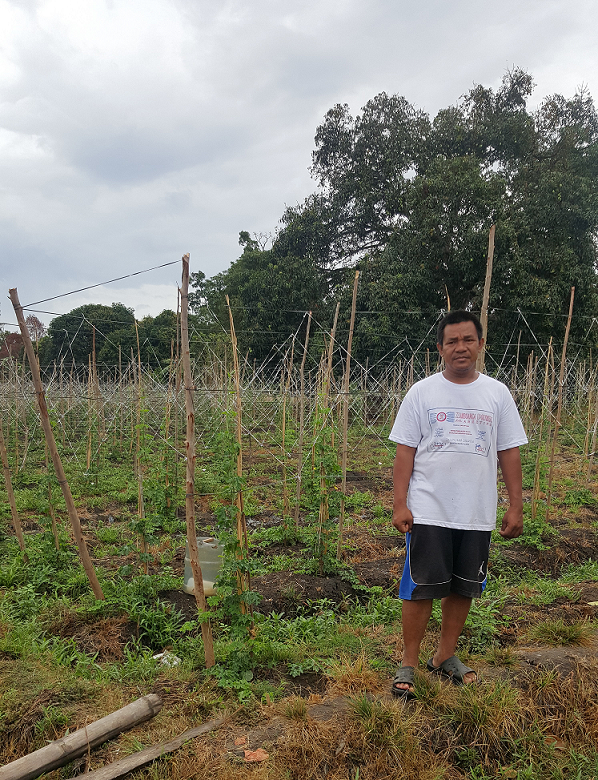
Authorities to provide cash and food assistance to drought-hit farmers
The drought has also taken a heavy toll on the city’s farmers, who have suffered up to 75 per cent production losses. Edgar Silvestre, who lives in Barangay Mercedes, which is dubbed the “rice bowl of Zamboanga City”, is one of the farmers affected by the severe drought. A portion of his two-hectare rice field has been idle since the last harvest in January. His was able to harvest only 100 bags of rice, a third of the normal production.
Edgar planted bitter gourds in place of rice, but even these have been affected by the heat and have not fully developed to yield adequate income. With the mounting production losses, he can only pay half of his loan. He hopes to recover his losses with the next harvest expected in October.
The DSWD has committed to providing 10 days of cash-for-work assistance to 3,000 out of over 6,000 farmers in the city. The selected farmers will clean up river banks, irrigation canals and dams, and plant mangrove propagules.
The challenge now is to find ways to provide support to the remaining farmers. The city authorities plan to distribute sacks of rice to these farmers, but this has been made difficult by a nationwide ban on public procurement for new projects, which began in late March ahead of the elections.
The city’s Legal Office is seeking an exemption from the Commission on Elections to allow for the use of the city’s calamity funds to purchase rice for the drought-affected farmers. Meanwhile, the city’s Agricultural Office has lent six water pumps to the affected farmers. The provision of additional seeds and fertilisers will commence after the drought.
Humanitarian organisations continue to provide camp management, water, sanitation and hygiene, livelihood and community engagement support to the displaced families, while monitoring the food, nutrition and health needs of the IDPs and drought-affected farmers.Some 23,000 people remain displaced in Zamboanga City, two and half years after the conflict.
Philippines seeks international classification for its search and rescue teams
INSARAG capacity assessment team visits the Philippines
From 4 to 8 April, a group of urban search and rescue (USAR) experts from Australia, China, Japan and Singapore visited the Philippines to assess operational capacity of three USAR teams in the country. The visit was part of the International Search and Rescue Advisory Group’s (INSARAG) scoping exercise to help build national USAR capacity in the Philippines, which could meet international standards to deploy in response to sudden onset disasters overseas.
INSARAG, established in 1991, is a global network of over 800 countries and organisations working together to facilitate coordination among various international USAR teams. These teams make themselves available for deployment to countries suffering earthquakes and other devastating events of structural collapse.
During the five-day mission, the INSARAG team met with officials of the Philippine government’s National Disaster Risk Reduction and Management Council (NDRRMC) and evaluated USAR capabilities of the Philippine Air Force, the Philippine Army and the Emergency Rescue Unit Foundation (ERUF), a civilian rescue and emergency medical team based in Cebu.
For the Philippine government, strengthening USAR capacity to respond to sudden onset emergencies has been a key priority since Typhoon Haiyan (known locally as Yolanda), which devastated the country’s Visayas regions in November 2013. The NDRRMC established a national response cluster on Search, Rescue and Retrieval (SRR) to institutionalise timely, systematic and effective SRR operations in disaster-affected areas. The Cluster coordinates and deploys available search and rescue teams from the Government, the civil society, the local private sector and the international community.
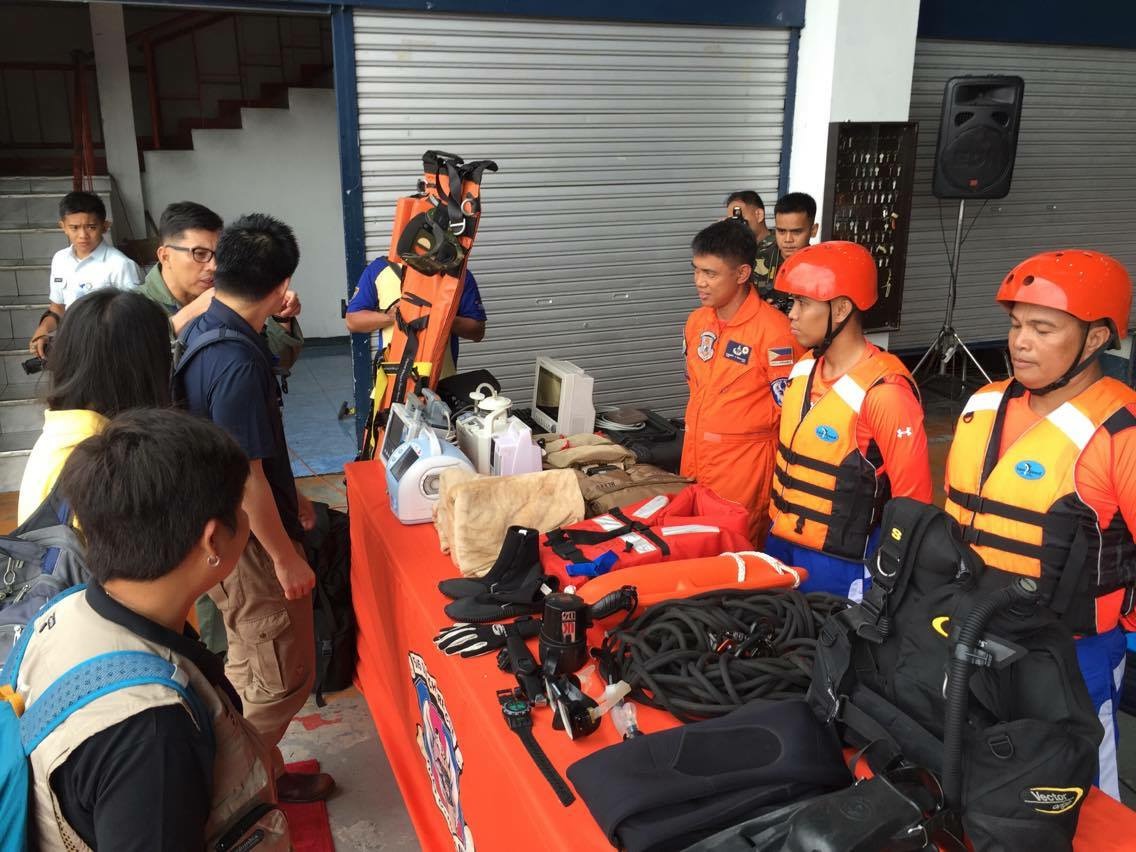
More photos from the INSARAG scoping mission
Key recommendations: policy, training, regional engagement and funding
On the last day of the visit, the INSARAG team drew up 20 recommendations to pave the way forward in the Philippines’ pursuit of INSARAG External Classification in the coming years. Based on the institutional and operational assessment of the USAR capacity of the country, these recommendations focused on policy and governance, training, regional engagement and funding.
Overall, the INSARAG team found the Philippines’ USAR teams to be highly competent to respond to disasters within the country. Meanwhile, the Government is yet to develop national guidelines for outgoing international relief including SRR units. Standardisation of training modules and joint training to ensure interoperability across all USAR teams, continuous engagement with INSARAG’s regional activities, and long-term budgeting to sustain an internationally-certified USAR capability are also needed.
The scoping mission team assured that the INSARAG was a community of practice that continuously learns from its members and that it would welcome the lessons and best practices of the Philippines. “We will remain committed to sustainable development of the USAR capability in the Philippines,” Undersecretary Alexander Pama, Administrator of the Office of Civil Defense and the NDRRMC’s Executive Director, told the mission during its debrief to NDRRMC officials. The Philippines also agreed to host the INSARAG Asia-Pacific Regional Earthquake Response Exercise in 2017.
The assessment team agreed to send a follow-up mission after a year to evaluate the progress of recommendations. OCHA as the Secretariat of the INSARAG facilitated the mission, and will continue to support to the Philippine government in its further endeavour.
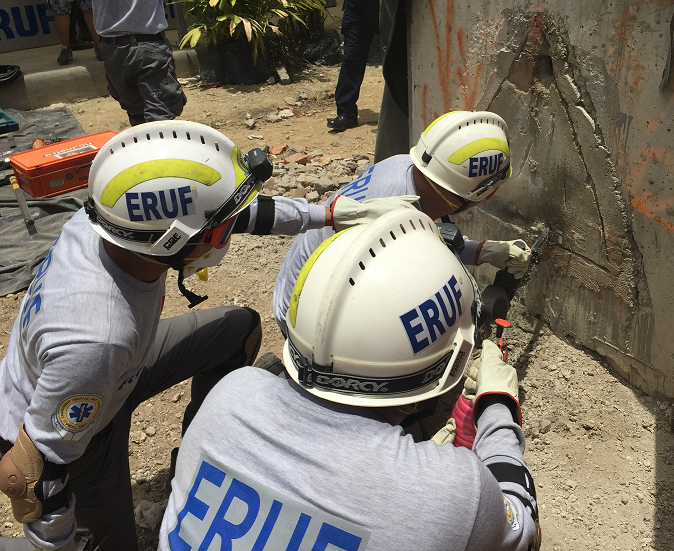
USAR experts from four countries visited the Philippines to assess the country’s emergency search and rescue capacity.
While the USAR teams in the Philippines were found highly competent, challenges remain in further institutionalisation and sustainable development of USAR capacity to meet international standards.
Philippine businesses for disaster resilience
Private sector as the first responder and lasting partner for recovery
Local businesses are often directly affected by natural disasters such as tropical cyclones and earthquakes. Yet they are usually among the first responders to these calamities; they also stay long after international and national aid agencies leave to support the communities get back on their feet.
When Typhoon Haiyan struck the central Philippines in November 2013, local companies and foundations provided the disaster-affected communities with emergency relief items and logistics and communication services. They revived the markets through keeping affected employees on the payroll and providing livelihood support to small business owners down the supply chains. Many also supported the Government’s rehabilitation plan to rebuild houses, schools and community infrastructure.
Globally, private donations from individuals and organisations contributed over $210 million in response to the typhoon and were in fact the largest funding source to cover over 25 per cent of the UN-led Typhoon Haiyan Strategic Response Plan, according to OCHA’s Financial Tracking Service.
Philippine Disaster Resilience Foundation
The Philippine Disaster Resilience Foundation (PDRF) was founded in 2009 in the aftermath of Tropical Storm Ketsana (Ondoy) and Typhoon Parma (Pepeng) to mobilise the resources of influential businesses in the country to support the Government’s reconstruction programme. It has since served as an umbrella organisation for the private sector to coordinate disaster preparedness, response and recovery efforts.
In the wake of Typhoon Haiyan, PDRF joined coordination meetings of the international humanitarian community to share information and align its response initiatives with those of other partners. Many PDRF members also sponsored the Government’s recovery programmes. In February 2015, PDRF became an Observer to the Philippines Humanitarian Country Team to represent the country’s private sector at large.
More recently, PDRF has undertaken a number of disaster preparedness initiatives including: business continuity planning (BCP) workshop and other emergency preparedness training for small and medium enterprises; new partnerships with businesses, local civil society organisations, academic institutions and the media to strengthen coordination and technical collaboration; participation in metro-wide and nationwide earthquake simulation exercises; and establishment of a disaster operation centre managed by local business partners.
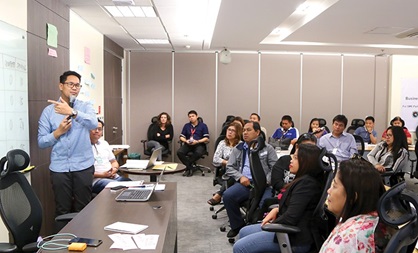
World Humanitarian Summit and Connecting Businesses initiative
The role of businesses in providing innovative, cost-efficient and effective solutions to humanitarian assistance will be a key topic to be discussed at the first-ever World Humanitarian Summit which will take place from 23 to 24 May in Istanbul, Turkey. At the Summit, a special session will be dedicated to launch the “Connecting Businesses” initiative, which aims to transform business engagement and public-private partnerships in disaster risk reduction, emergency preparedness, response and recovery by increasing the scale and effectiveness of business engagement in a coordinated manner.
“We need to link humanitarian help and development to ensure that devastated areas truly recover and are not left destitute and desolate after international aid agencies pull out,” said Rene “Butch” Meily, President of PDRF, in his blog post for the Summit. “Disasters are becoming more complex with long-lasting effects on a population and one indispensable actor to restore a region to normalcy is the private sector.”
Private donations contributed over $210 million in response to Typhoon Haiyan and were the largest funding source of the Typhoon Haiyan Strategic Response Plan.
“We need to link humanitarian help and development to ensure that devastated areas truly recover and are not left destitute and desolate after international aid agencies pull out.”
- Rene ‘Butch’ Meily, PDRF